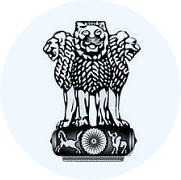UPSC Exam > UPSC Questions > Consider the following statements regarding ...
Start Learning for Free
Consider the following statements regarding zamindars during the Mughal period:
The ownership of land held by zamindars was hereditary.
They were the owners of all the land comprising their zamindari.
Which of the statements given above is/are correct?
- a)1 only
- b)2 only
- c)Both 1 and 2
- d)Neither 1 nor 2
Correct answer is option 'A'. Can you explain this answer?
Verified Answer
Consider the following statements regarding zamindars during the Mugh...
- The right of ownership of Zamindars regarding the land depended mainly on succession. Hence statement 1 is correct.
- The people who settle a new village or who brought wastelands under cultivation, belong to the respective villages. These villagers became the owners of these lands.
- The considerable section of the zamindars had the hereditary right of collecting land revenue from their respective villages. This was called his ‘talluqa’ or his ‘zamindari.’
- For collecting the land revenue, the zamindars received a share of the land revenue which could go up to 25 percent.
- Zamindars held enormous tracts of land and control over their peasants, from whom they reserved the right to collect tax on behalf of imperial courts or for military purposes.
- The zamindars, not necessarily “owner” of all the lands over which he collected the land revenue. Hence statement 2 is not correct.
- The peasants who actually cultivated the land could not be dispossessed as long as they paid the land revenue. Thus the zamindars and the peasants, both had their own hereditary rights in land.
Most Upvoted Answer
Consider the following statements regarding zamindars during the Mugh...
Ownership of land held by zamindars was hereditary:
- The statement is correct.
- Zamindars were powerful landowners in the Mughal Empire who were granted the rights to collect revenue from a specific area of land known as a zamindari.
- These rights were often hereditary, meaning that they were passed down from one generation to the next within a zamindar family.
- This ensured the stability and continuity of the zamindar system.
They were the owners of all the land comprising their zamindari:
- The statement is incorrect.
- While zamindars had the rights to collect revenue from the land in their zamindari, they did not have absolute ownership over the land itself.
- The land belonged to the Mughal Emperor, and the zamindars were essentially intermediaries who collected revenue on behalf of the imperial treasury.
- The zamindars were required to pay a share of the revenue collected to the Mughal administration, and they were also responsible for maintaining law and order in their zamindari.
Explanation:
- The Mughal Empire followed a system of revenue administration known as the mansabdari system.
- Under this system, the emperor granted land revenue rights to various officials, including zamindars, who held a particular rank or mansab.
- The zamindars were responsible for collecting revenue from the peasants and forwarding a portion of it to the imperial treasury.
- In return, they were granted certain privileges and exemptions, such as the right to collect tolls and taxes, and the authority to maintain law and order in their zamindari.
- However, the zamindars did not have full ownership over the land.
- The land remained the property of the Mughal Emperor, and the zamindars were essentially tenants who held revenue collection rights.
- The zamindars' rights were hereditary, meaning they could pass them on to their descendants, but the ownership of the land itself remained with the imperial administration.
Conclusion:
- In summary, during the Mughal period, the ownership of land held by zamindars was hereditary, but they were not the owners of all the land comprising their zamindari. The land belonged to the Mughal Emperor, and the zamindars acted as intermediaries who collected revenue on behalf of the imperial treasury.
- The statement is correct.
- Zamindars were powerful landowners in the Mughal Empire who were granted the rights to collect revenue from a specific area of land known as a zamindari.
- These rights were often hereditary, meaning that they were passed down from one generation to the next within a zamindar family.
- This ensured the stability and continuity of the zamindar system.
They were the owners of all the land comprising their zamindari:
- The statement is incorrect.
- While zamindars had the rights to collect revenue from the land in their zamindari, they did not have absolute ownership over the land itself.
- The land belonged to the Mughal Emperor, and the zamindars were essentially intermediaries who collected revenue on behalf of the imperial treasury.
- The zamindars were required to pay a share of the revenue collected to the Mughal administration, and they were also responsible for maintaining law and order in their zamindari.
Explanation:
- The Mughal Empire followed a system of revenue administration known as the mansabdari system.
- Under this system, the emperor granted land revenue rights to various officials, including zamindars, who held a particular rank or mansab.
- The zamindars were responsible for collecting revenue from the peasants and forwarding a portion of it to the imperial treasury.
- In return, they were granted certain privileges and exemptions, such as the right to collect tolls and taxes, and the authority to maintain law and order in their zamindari.
- However, the zamindars did not have full ownership over the land.
- The land remained the property of the Mughal Emperor, and the zamindars were essentially tenants who held revenue collection rights.
- The zamindars' rights were hereditary, meaning they could pass them on to their descendants, but the ownership of the land itself remained with the imperial administration.
Conclusion:
- In summary, during the Mughal period, the ownership of land held by zamindars was hereditary, but they were not the owners of all the land comprising their zamindari. The land belonged to the Mughal Emperor, and the zamindars acted as intermediaries who collected revenue on behalf of the imperial treasury.

|
Explore Courses for UPSC exam
|

|
Similar UPSC Doubts
Consider the following statements regarding zamindars during the Mughal period: The ownership of land held by zamindars was hereditary. They were the owners of all the land comprising their zamindari. Which of the statements given above is/are correct?a)1 onlyb)2 onlyc)Both 1 and 2d)Neither 1 nor 2Correct answer is option 'A'. Can you explain this answer?
Question Description
Consider the following statements regarding zamindars during the Mughal period: The ownership of land held by zamindars was hereditary. They were the owners of all the land comprising their zamindari. Which of the statements given above is/are correct?a)1 onlyb)2 onlyc)Both 1 and 2d)Neither 1 nor 2Correct answer is option 'A'. Can you explain this answer? for UPSC 2025 is part of UPSC preparation. The Question and answers have been prepared according to the UPSC exam syllabus. Information about Consider the following statements regarding zamindars during the Mughal period: The ownership of land held by zamindars was hereditary. They were the owners of all the land comprising their zamindari. Which of the statements given above is/are correct?a)1 onlyb)2 onlyc)Both 1 and 2d)Neither 1 nor 2Correct answer is option 'A'. Can you explain this answer? covers all topics & solutions for UPSC 2025 Exam. Find important definitions, questions, meanings, examples, exercises and tests below for Consider the following statements regarding zamindars during the Mughal period: The ownership of land held by zamindars was hereditary. They were the owners of all the land comprising their zamindari. Which of the statements given above is/are correct?a)1 onlyb)2 onlyc)Both 1 and 2d)Neither 1 nor 2Correct answer is option 'A'. Can you explain this answer?.
Consider the following statements regarding zamindars during the Mughal period: The ownership of land held by zamindars was hereditary. They were the owners of all the land comprising their zamindari. Which of the statements given above is/are correct?a)1 onlyb)2 onlyc)Both 1 and 2d)Neither 1 nor 2Correct answer is option 'A'. Can you explain this answer? for UPSC 2025 is part of UPSC preparation. The Question and answers have been prepared according to the UPSC exam syllabus. Information about Consider the following statements regarding zamindars during the Mughal period: The ownership of land held by zamindars was hereditary. They were the owners of all the land comprising their zamindari. Which of the statements given above is/are correct?a)1 onlyb)2 onlyc)Both 1 and 2d)Neither 1 nor 2Correct answer is option 'A'. Can you explain this answer? covers all topics & solutions for UPSC 2025 Exam. Find important definitions, questions, meanings, examples, exercises and tests below for Consider the following statements regarding zamindars during the Mughal period: The ownership of land held by zamindars was hereditary. They were the owners of all the land comprising their zamindari. Which of the statements given above is/are correct?a)1 onlyb)2 onlyc)Both 1 and 2d)Neither 1 nor 2Correct answer is option 'A'. Can you explain this answer?.
Solutions for Consider the following statements regarding zamindars during the Mughal period: The ownership of land held by zamindars was hereditary. They were the owners of all the land comprising their zamindari. Which of the statements given above is/are correct?a)1 onlyb)2 onlyc)Both 1 and 2d)Neither 1 nor 2Correct answer is option 'A'. Can you explain this answer? in English & in Hindi are available as part of our courses for UPSC.
Download more important topics, notes, lectures and mock test series for UPSC Exam by signing up for free.
Here you can find the meaning of Consider the following statements regarding zamindars during the Mughal period: The ownership of land held by zamindars was hereditary. They were the owners of all the land comprising their zamindari. Which of the statements given above is/are correct?a)1 onlyb)2 onlyc)Both 1 and 2d)Neither 1 nor 2Correct answer is option 'A'. Can you explain this answer? defined & explained in the simplest way possible. Besides giving the explanation of
Consider the following statements regarding zamindars during the Mughal period: The ownership of land held by zamindars was hereditary. They were the owners of all the land comprising their zamindari. Which of the statements given above is/are correct?a)1 onlyb)2 onlyc)Both 1 and 2d)Neither 1 nor 2Correct answer is option 'A'. Can you explain this answer?, a detailed solution for Consider the following statements regarding zamindars during the Mughal period: The ownership of land held by zamindars was hereditary. They were the owners of all the land comprising their zamindari. Which of the statements given above is/are correct?a)1 onlyb)2 onlyc)Both 1 and 2d)Neither 1 nor 2Correct answer is option 'A'. Can you explain this answer? has been provided alongside types of Consider the following statements regarding zamindars during the Mughal period: The ownership of land held by zamindars was hereditary. They were the owners of all the land comprising their zamindari. Which of the statements given above is/are correct?a)1 onlyb)2 onlyc)Both 1 and 2d)Neither 1 nor 2Correct answer is option 'A'. Can you explain this answer? theory, EduRev gives you an
ample number of questions to practice Consider the following statements regarding zamindars during the Mughal period: The ownership of land held by zamindars was hereditary. They were the owners of all the land comprising their zamindari. Which of the statements given above is/are correct?a)1 onlyb)2 onlyc)Both 1 and 2d)Neither 1 nor 2Correct answer is option 'A'. Can you explain this answer? tests, examples and also practice UPSC tests.

|
Explore Courses for UPSC exam
|

|
Signup for Free!
Signup to see your scores go up within 7 days! Learn & Practice with 1000+ FREE Notes, Videos & Tests.
























